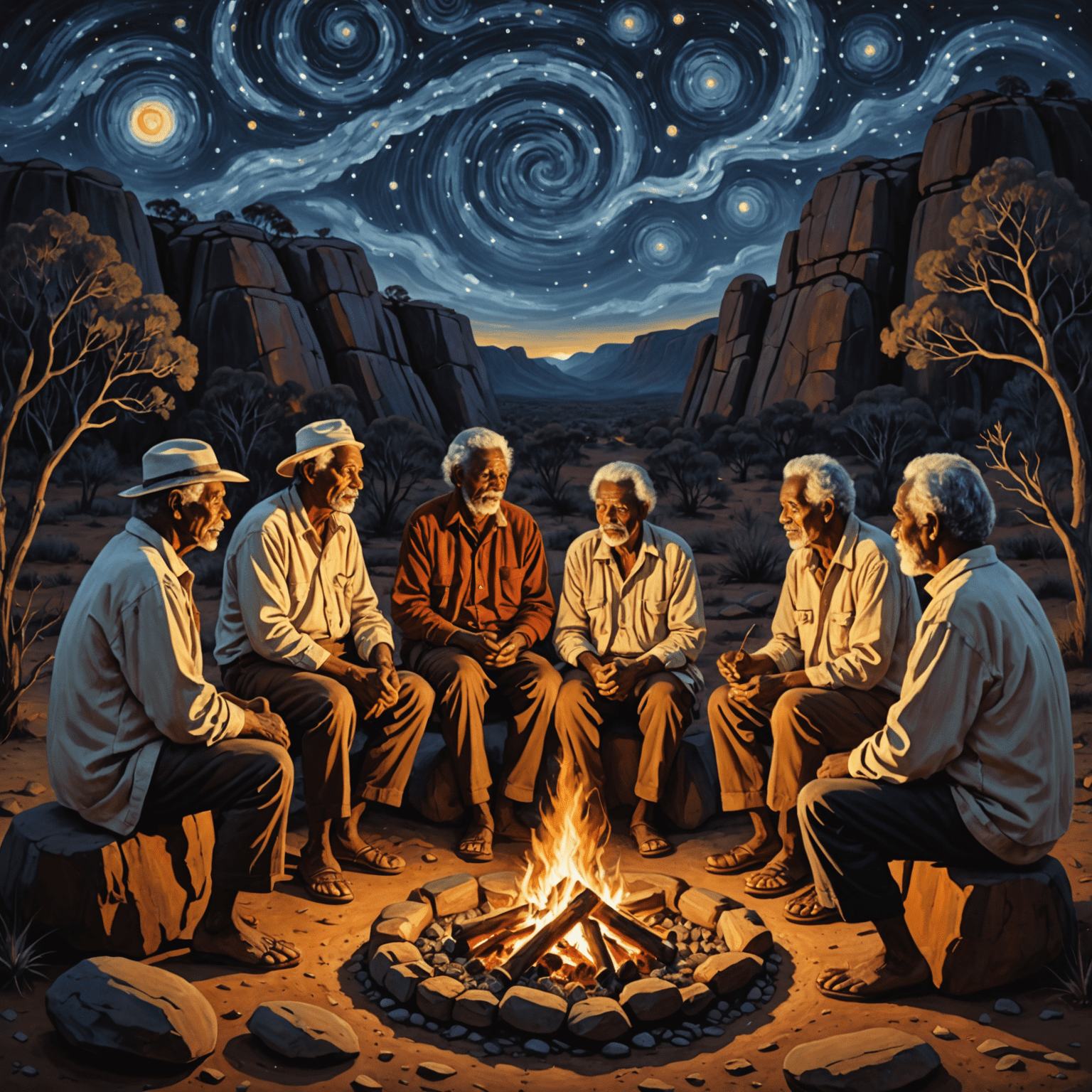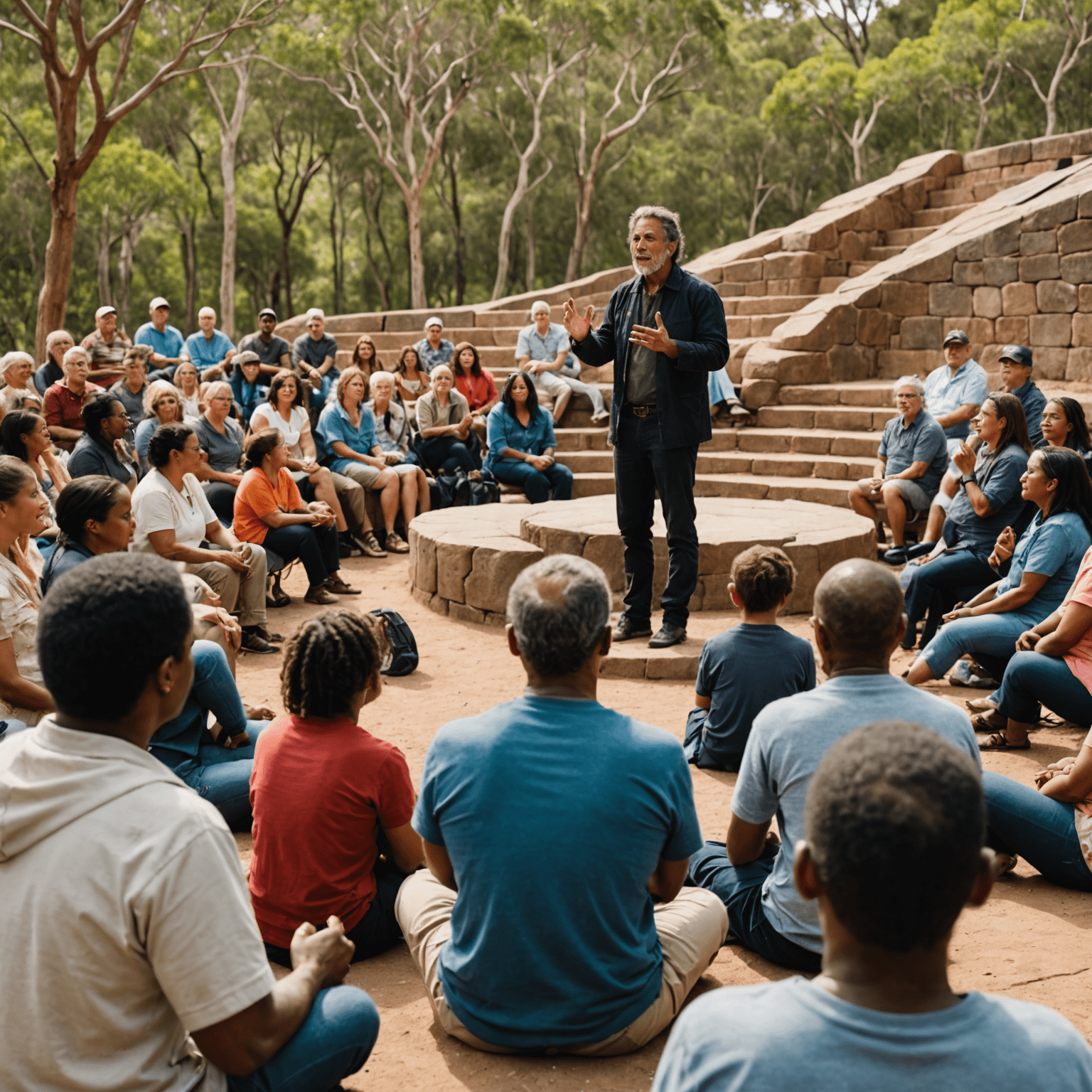Storytelling Techniques from Indigenous Australian Traditions

In the rich tapestry of Australian culture, Indigenous storytelling stands as a beacon of wisdom, offering powerful techniques that can elevate your public speaking skills to new heights. Let's explore how these ancient methods can help you captivate your audience and deliver messages that resonate deeply.
The Dreamtime: Weaving Timeless Narratives
Indigenous Australian storytelling often begins with the concept of the Dreamtime, a complex network of creation stories and spiritual beliefs. By incorporating this technique:
- Start your speeches with a compelling origin story that sets the stage for your main message
- Use vivid imagery to create a sense of timelessness and universal truth
- Connect your audience to something greater than themselves, fostering a sense of shared purpose
Oral Tradition: The Power of Rhythm and Repetition
Aboriginal and Torres Strait Islander cultures have preserved their stories through oral tradition for thousands of years. Harness this power by:
- Incorporating rhythmic patterns in your speech to make it more memorable
- Using strategic repetition of key phrases to reinforce important points
- Practicing your delivery to achieve a natural, conversational flow that engages listeners

Connection to Country: Grounding Your Message
Indigenous stories are deeply connected to the land. Apply this principle to your public speaking by:
- Anchoring your message in tangible, relatable experiences
- Using metaphors drawn from nature to illustrate complex ideas
- Acknowledging the traditional owners of the land where you're speaking, showing respect and setting a tone of inclusivity
Songlines: Mapping Your Narrative Journey
Songlines are intricate paths across the land, encoded with cultural knowledge. Use this concept to:
- Create a clear narrative structure that guides your audience through your speech
- Incorporate mnemonic devices or 'landmarks' in your talk to help listeners follow along
- Weave together seemingly disparate ideas into a cohesive whole
The Art of Listening: Engaging Your Audience
In Indigenous storytelling, the audience plays an active role. Enhance your public speaking by:
- Encouraging audience participation through questions or shared responses
- Being attentive to your listeners' reactions and adapting your delivery accordingly
- Creating moments of silence to allow for reflection and deeper understanding

Conclusion: Honoring Tradition in Modern Communication
By incorporating these powerful storytelling techniques from Indigenous Australian traditions, you can transform your public speaking into an immersive, memorable experience. Remember to approach these methods with respect and cultural sensitivity, acknowledging their origins and significance.
As you practice and refine these techniques, you'll find your ability to connect with audiences deepening, your messages becoming more impactful, and your confidence as a speaker growing. Embrace the wisdom of Australia's First Nations people, and watch as your communication skills flourish in this uniquely Australian context.